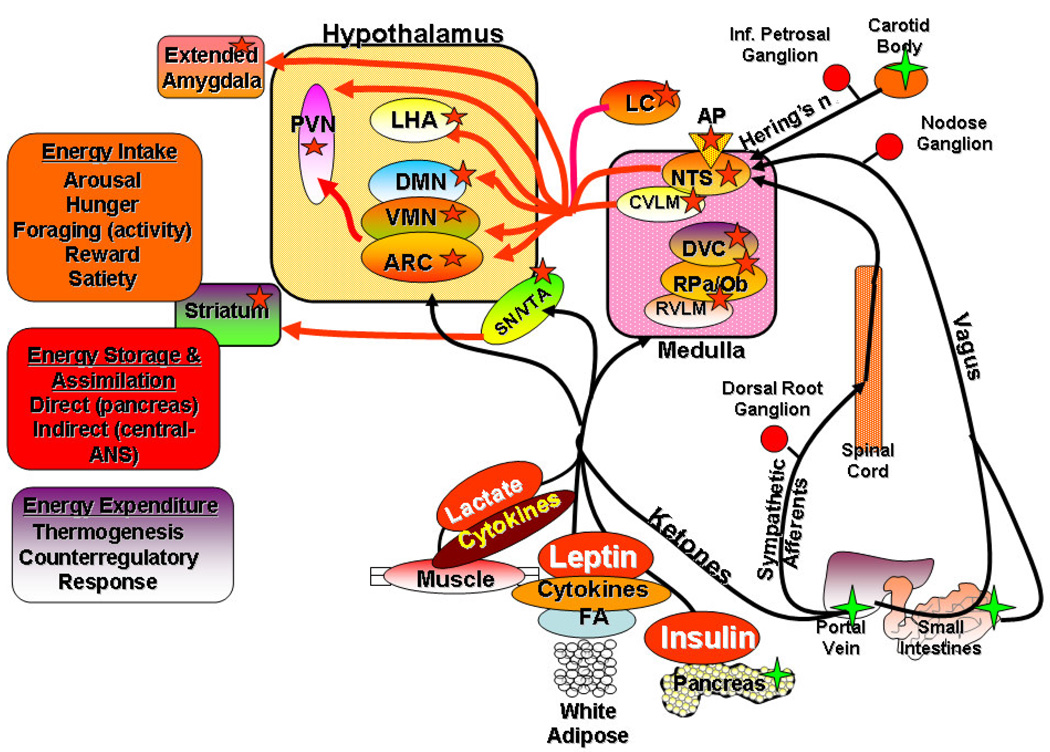Figure 2.
The distributed network of central metabolic sensing neurons (red stars) and the peripheral inputs that allow them to monitor peripheral metabolic activity and the status of adipose stores. Metabolic sensing neurons in the nucleus tractus solitarius (NTS) receive hardwired vagal and sympathetic afferents from peripheral sensing elements (green stars) in the portal vein, small intestines and carotid body. Neural projections from the NTS disseminate these neural signals to metabolic sensing neurons the hypothalamus (arcuate (ARC), ventromedial (VMN), dorsomedial (DMN), paraventricular (PVN) nuclei, lateral hypothalamic area (LHA)) and areas of the extended amygdala which also have transporters, receptors and sensing apparatus for metabolic substrates (glucose, lactate, ketone bodies, long chain free fatty acids (FA)), hormones (insulin, leptin) and cytokines generated in peripheral organs. Additional metabolic sensing neurons also reside in the caudal ventrolateral medulla (CVLM), rostral ventrolateral medulla (RVLM), dorsal vagal complex (DVC), raphe pallidus (RPa) and obscurus (Rob), substantia nigra (SN), area postrema (AP), locus coeruleus (LC), ventral tegmental area (VTA) and striatum. All of these metabolic sensing neurons integrate the neural, metabolic and hormonal signals from the periphery which results in alterations in membrane potential, action potential frequency and neurotransmitter/peptide release. Their efferent outputs regulate the behavioral, metabolic, hormonal and physiological functions involved in energy homeostasis (intake, expenditure, storage).

